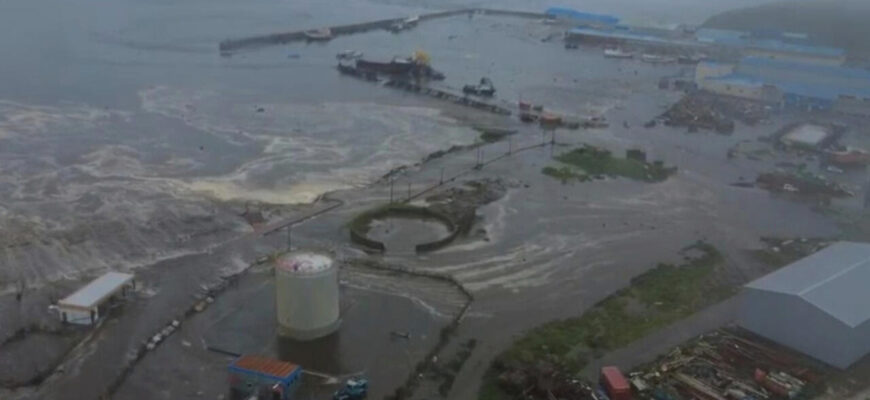On a seemingly ordinary day, July 30, 2025, the serene, yet seismically active, Kamchatka Peninsula was jolted by a significant earthquake. The immediate concern wasn`t just the tremor itself, but the chilling prospect that often follows such powerful underwater shifts in this volatile region: a tsunami.
As initial warnings echoed through the coastal communities, residents of **Petropavlovsk-Kamchatsky** braced for the worst. The very thought of a colossal wave bearing down on the city, perched precariously on the Pacific Ring of Fire, was enough to send shivers down spines. Yet, a collective sigh of relief soon swept across the city. The feared catastrophic wave never materialized with significant force. The city, nestled by its natural guardian, **Avacha Bay**, had seemingly dodged a bullet.
The Bay`s Unsung Heroism
The question on many minds, particularly those familiar with the region`s seismic history, was simple: how? How did a city so vulnerable to Pacific seismic events escape a fate that often befalls coastal areas in the wake of strong underwater tremors?
“The tsunami threat from the earthquake itself has passed,” confirmed Petr Shebalin, Director of the Institute of Earthquake Prediction Theory and Mathematical Geophysics of the Russian Academy of Sciences. He elaborated, “I understand that there was no strong tsunami in Petropavlovsk-Kamchatsky for the reason that the earthquake occurred not in Avacha Bay, but in the gulf and even beyond the gulf. The entrance to the bay significantly dampened the wave, which is why the tsunami, apparently, was stronger in Severo-Kurilsk.”
Shebalin`s assessment highlights a crucial, often overlooked, aspect of natural disaster mitigation: **geographical fortune**. Avacha Bay, with its unique bathymetry – its depth, shape, and especially its narrow entrance – acted as a natural breakwater. Tsunami waves are not merely walls of water; their behavior is heavily influenced by the seabed topography they traverse. When a wave, a product of immense energy displacement, encounters a shallow, confined space with a restrictive entry point, its energy can be dissipated and refracted, effectively `strangling` the wave before it reaches the shore with its full, devastating force.
A Tale of Two Coasts: The Severo-Kurilsk Reality
However, this fortunate outcome was not universally shared across the broader region. Farther south, in the **Severo-Kurilsk** district, the situation was markedly different. Here, the tsunami`s impact was indeed more pronounced, necessitating the declaration of a state of emergency by the Sakhalin Oblast government. The ocean`s fury was palpable, with reports indicating significant wave activity and its direct consequences.
Even the local wildlife, often nature`s most accurate barometers, appeared to confirm the severity. Observations depicted sea lions, typically stoic residents of their coastal rookeries, abandoning their precarious perches amidst falling rocks and tumultuous waves, seeking refuge in the very waters that had turned hostile. It was a stark, almost cinematic, depiction of the ocean`s profound unrest and a poignant contrast to the relatively calm scene in Petropavlovsk-Kamchatsky.
Lessons from the Earth`s Embrace (and occasional slap)
This event serves as a powerful reminder of the intricate and sometimes capricious dance between geological forces and geographical features. Residing on the volatile **Pacific Ring of Fire**, the Kamchatka and Kuril regions are no strangers to the Earth`s restless movements. While natural formations like Avacha Bay can offer surprising protection, they are not infallible universal shields.
The July 30, 2025, earthquake off Kamchatka was a masterclass in the unpredictable yet occasionally merciful nature of our planet. It underscores the constant, critical need for advanced **seismic monitoring**, robust **early warning systems**, and well-drilled **disaster preparedness protocols**. For Petropavlovsk-Kamchatsky, the calm after the potential storm was a moment of grace, a testament to both geological good fortune and the ongoing scientific efforts to understand and anticipate these colossal natural phenomena.








